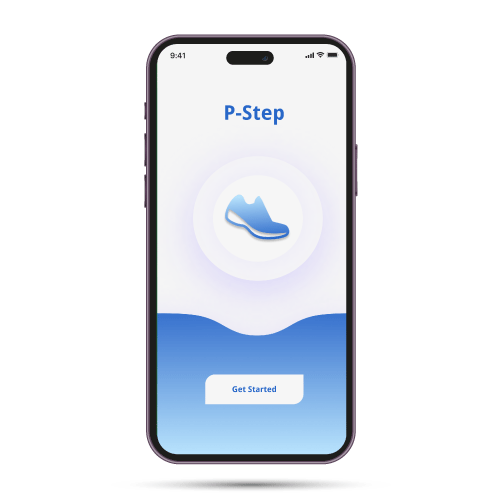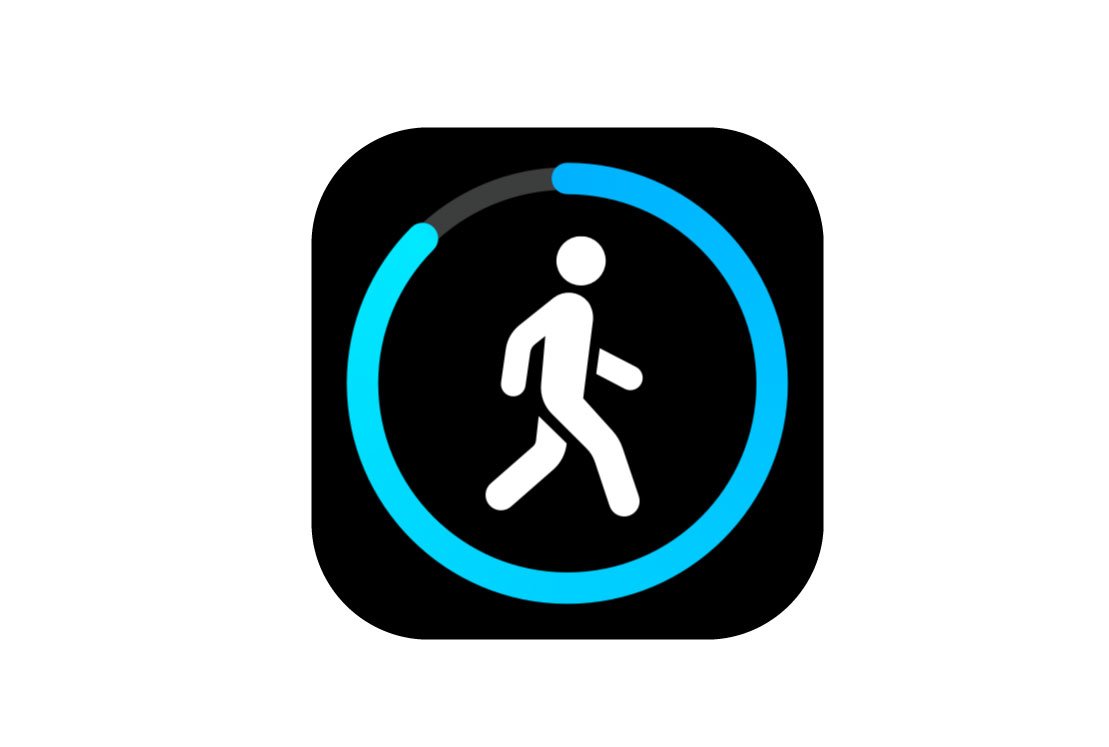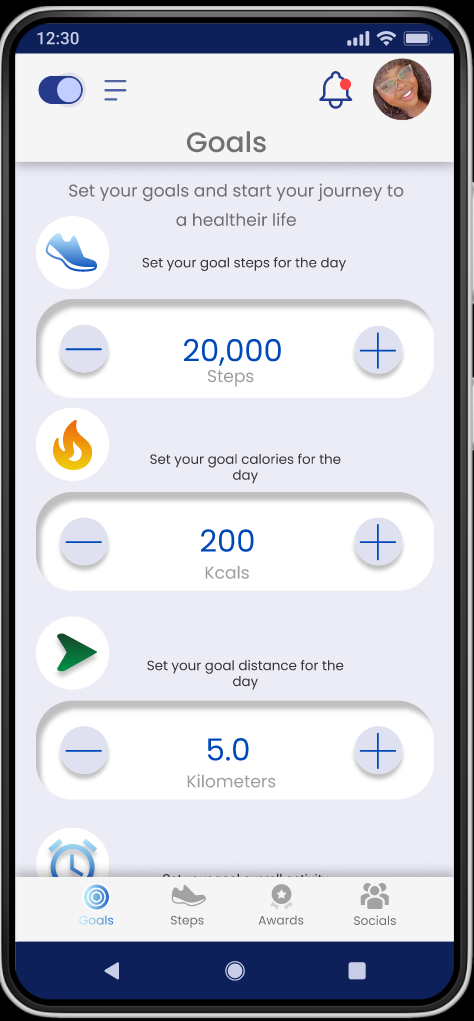P-Step: Gamification of walking
This end-to-end project commenced with in-depth research. I examined how to effectively implement gamification and social networking strategies in the P-STEP project, a health application being undertaken by the University of Leicester to encourage walking.
I used Figma as its main design tool in order to gauge how various material design components and elements can be arranged in a comprehensive manner to yield an engaging user interface that makes use of gamification and social networking features.
The Challenge
I was quested with finding out what the most effective gamification elements are and how they can be implemented in the design of a mobile health application UI to improve user retention and foster user engagement.
Requirements
Role: UX/UI Designer, Researcher, Front End Developer
Tools: Figma, Adobe Illustrator, React Native
Timeline: 3 Months
Process
Literature review
Competitive Analysis
Low-Fidelity Prototype/Sketch
Information Architecture
Mid-High Fidelity Prototype
User Study and Evaluation
Partial Proof of Concept
Conclusion
Identify and evaluate the most effective gamification strategies that can be implemented in a mobile health application.
Design and develop interactive user interface prototypes employing the identified gamification elements, material design components, and Figma.
Aims and Objectives
Literature Review
-
The Personalised Space Technology Exercise Platform (P-STEP) is a mobile app concept proposed by the University of Leicester in collaboration with Leicester’s Hospitals to provide an artificial intelligence-based platform that uses space data to deliver tailored exercise regimens and advice for various diseases.
-
The double diamond method takes the form of two diamonds used to depict the design process of widely thinking about the problem (diverge) and then focusing on unspecific elements, processes, and tools in order to find a solution (converge). It consists of four parts used to represent each point in the design process stated and defined as follows:
• Discover
• Define
• Develop
• Deliver
-
Scientists have developed a middleware framework that integrates multiparameter and multiple interfaces that facilitates the monitoring of psychological and physical medical data. This can be called applied in a form dorm of a mobile application for health purposes (mHealth). Understanding the basic architecture of mhealth apps is vital in realizing the requirements for the user interface of the mobile health application to be delivered.
-
The UX goals can be characterized by ease of use and learning, customer satisfaction, safety security and privacy, error prevention, user attraction and overall performance of the product or system as experienced by the user.
Measure could be assessed by initial performance, learnability, retainability, overall error related performance, task specific time and error performance and user initial and overall satisfaction of the product.
-
A simple definition of gamification could be given as the use of game elements and components in a non-game context. The use of elements such as rewards enhance user satisfaction by playing on concepts such as competition, autonomy, sociability, and self-expression.
Engagement is a quality of user experience that facilitates more enriching interactions with computer applications and can be defined by a core set of attributes: aesthetic appeal, novelty, involvement, focused attention, perceived usability, and endurability.
Game mechanics can be described as the rules and processes governing a designed game and the methods users use interacting with them. The main component of game mechanics to include:
• A story
• Goals
• A Challenge
• Visible Progression
• Time-limit.
• Immediate feedback
• Rewards
Leader boards, badges and progress may prove the most effective in the gamification strategy to be developed.
MyFitnessPal
Strengths:
Great use of white space and minimalist design.
Intuitive and covers a large range of fitness sectors including nutrition.
Large database of information on nutrition and workouts.
A large community of users.
Implements pedometers from other applications
Weaknesses:
Does not have its own pedometer.
Unengaging notifications
Too much information on a page.
Competitive Analysis
MapMyWalk
Strengths:
A great social feature that allows you to add friends and create collective challenges.
Integration of the map feature allows real-time location tracking of the user
Weaknesses:
Outdated interface and content design.
Does not automatically start step count.
MyStepApp
Strengths:
Intuitive, attractive, and minimalist interface design.
Great use of space implementing inner tabs for sections.
Attractive reward badge designs.
Can integrate other applications.
Ability to switch light and dark themes.
Engaging notification with milestones.
Weaknesses:
Limited social feature
Continuous interruption of video with ads
NHS Active
Strengths:
Completely free.
Minimalist design.
Great progress report and feedback.
Extensive Gamification features.
Has its own pedometer.
Very easy to set up and use.
Weaknesses:
Mediocre interface design.
Out-dates 2D use of rewards.
Only used for brisk walks.
Limited social feature
Low-Fidelity Prototype.
It took the form of a paper sketch indicating the main features of gamification and social interaction. The four (4) main pages were labelled:
Step Page: This contains the main real-time step count of the user. The page was to contain general information and information on progress.
Goal Page: This enables users to set milestones of step count, calories, duration, and distance in order to meet specific goals.
Award page: This was the page that contained all gathered awards and future awards that could be obtained.
Friend page: This page was the main social networking page.
The main game elements selected were:
Badges
Leader boards
Progress or status bars/indicators
Social features: sharing steps and awards, social interactions with friends.
Information Architecture
The Step page: This page was connected to the goal page, award page and social page in the form of the navigation bar. It was also interconnected with overlays that contained the daily highlights.
The Goal page: This page like the step page makes use of the navigation bar at the bottom and a weight setting overlay.
The Award page displays a limited number of badges which expands to the whole awards page that shows an extensive preview of rewards attainable. It also has a navigation bar for movement across the pages.
The Social networking page is by far the most extensive page with three (3) tabs that allow for the managing of the friend lists by adding or removing friends, information on shared steps and badges and information on nudges as well as the ability to nudge
Mid-High Fidelity Prototype
The design of the prototype was refined, and more features were added on. The number of pages increased from four (4) to about eight (8) with various additional features such as overlays added to pages to increase their interactivity. The addition of tabs in the social networking section allows for more features such as nudging friends into the network. The pages were named:
Awards
Badge share
Steps
Goals
And various overlays
Nudges
Friend list
Customized badges and awards were designed using adobe illustrator although they continue to serve as placeholders for the main badges to be designed for the gamification feature.
User Studies and Evaluation
Overview
This user study was conducted at the University of Leicester. It took place over the month of August 2022 and focused on the testing of an interactive prototype aimed at implementing gamification elements in the P-STEP project. This user study aimed to gather data pertaining to specific features of the prototype and determine the overall engagement and usability of the prototype. It examines overall factors of engagement such as:
Focused attention
Perceived Usability
Aesthetic Appeal
Endurability
Novelty
Felt Involvement
Participants
Due to the nature of the study, the main participants for the study were stakeholders involved in the P-STEP project. Four (4) participants were used in the study with one (1) being the pilot and three (3) performing the study after the pilot study findings were used to update the prototype.
Tool Selection
Consent Form: Used to acquire consent from participants.
Background questionnaire: Used to obtain key background information
Task: The tasks are designed to test the prototype pages and functions.
Task performance Form: used to collect more in-depth observable quantitative and qualitative data.
Interview and feedback questionnaire: Used to obtain a more detailed understanding of the designed prototype.
User Engagement Scale document: Standardised document for gauging user engagement of applications and websites.
Interactive prototype.
Location
This study was performed online via Microsoft teams as it was the most convenient for all parties involved. It was also most efficient in obtaining word-for-word descriptions in the form of the Microsoft Teams transcript function and a recorded version of the test.
Duration
The test duration was initially predicted to be sixty (60) minutes and was modified after the pilot study and various technical problems were solved to be less than forty-five (45) minutes.
Findings
At initial introduction to the four (4) main pages, step, goal, game, and friend of the interface designed, all or 100% of participants were able to identify what each page was meant to do. After identifying the general layout of the application, they went ahead to perform the tasks provided.
Using the table below, the summary of the results and data collected as far as task completion, time on task, error and satisfaction were collected. Satisfaction was calculated as the mean across the post task question ease of finding and ease of tracking.
-
According to the data collected, all participants were able to complete all tasks allocated to them with a 100% success rate. This proves that all functionalities of the application are visible and navigation to correct mistakes are available.
-
Overall participants did not seem to struggle too much even though there were notable errors and frustrations the post task questions asked varied in relation to the errors.
-
The time taken to complete each task was noted and the average time on task for each task was calculated. From the data collected the lowest amount of time was spent on the first task (20.42 secs) and the most amount of time was spent on the last task (99.06 secs). Every task that surpassed an average of 30 secs to complete was flagged as potentially problematic inculcating task 3, 5 and 6.
-
The satisfaction metric was calculated as the average rate of the Likert scale from 5- being the strongest in agreement to 1-being the strongest in disagreement across all tasks. There were 2 metrics used, the ease of finding information and the ability to track location at any point in time. Any task below the scale of four (4) could be deemed unsatisfactory flagging task 3 and task 6 as the most unsatisfactory with an average rating of 3.8 and 3 respectively.
Discussion
All participants have used applications that have gamification features before. This could affect how their results could translate to a larger audience of the desired target group.
The results acquired may not be deemed applicable to newer non-stakeholders as their response would vary vastly from those achieved.
Participants seemed to focus more on the usability and aesthetics of the application than on the other elements of engagement such as novelty and endurability.
Participants did not seem to find the navigation of the application too difficult. They also found the application to be aesthetically pleasing and overall quite usable.
The participants did not seem to lose themselves completely in the experience and this could be attributed either to continuous communication with the researcher or the outside world.
This study only had 3 participants and the only apparent conclusion that could be drawn from the study is that given enough time all participants eventually complete their tasks.
Feedback and Recommendations
“The categories and awards showing was good”
“Goal setting was good, and it was good to have the options. The rewards are motivating and encouraging to choose and the overview of everything done in a day was encouraging. the nudging feature was great.”
“The foot page puts useful information on the front page, and you can get to every page from the page. The app is simple and wouldn’t mind using everyday”
Participants also had their grievances and things they would have preferred to be done differently or changed stating factors such as:
“Goal page archaic and the weight can’t be edited, duration and weight, too simple and archaic. The overall progress is hidden far away, so it needs to get more tabs for monthly and yearly progress.”
“Manually adding the weight could be problematic so maybe connect to another health app”
“Icons are big, bottom icons, goals icons can be changed, change share icon and write description below.”
Partial Implementation
I sought then to develop the application interface with react-native and more specifically the snack.expo.dev platform. The main aim of the partial implementation was to test the feasibility of the designed prototype in accordance with the material design 2 and 3 guidelines. The partial implementation could be considered the delivery aspect of the program.
Snack.expo is an online platform that allows the designing, running, and viewing of various applications in the form of web, android or IOS applications. It allows for collaborative development and the easy sharing of code when developing react-native applications.
Conclusion
As there was no extensive development in the way of implementation, the future recommendation would be the full implementation of the design. The vigorous testing of this fully implemented application with a larger sample size over a longer period of time would be a more accurate determination of the engagement a retention power of the designed prototype. This project shows a lot of promise and if properly implemented could change the lives of its users as it sets out to do. This project thusly accurately, discovers, defines, develops, and delivers a comprehensive understanding of user engagement retention of the P-STEP project using Gamification Strategies or Social Networking Features.














